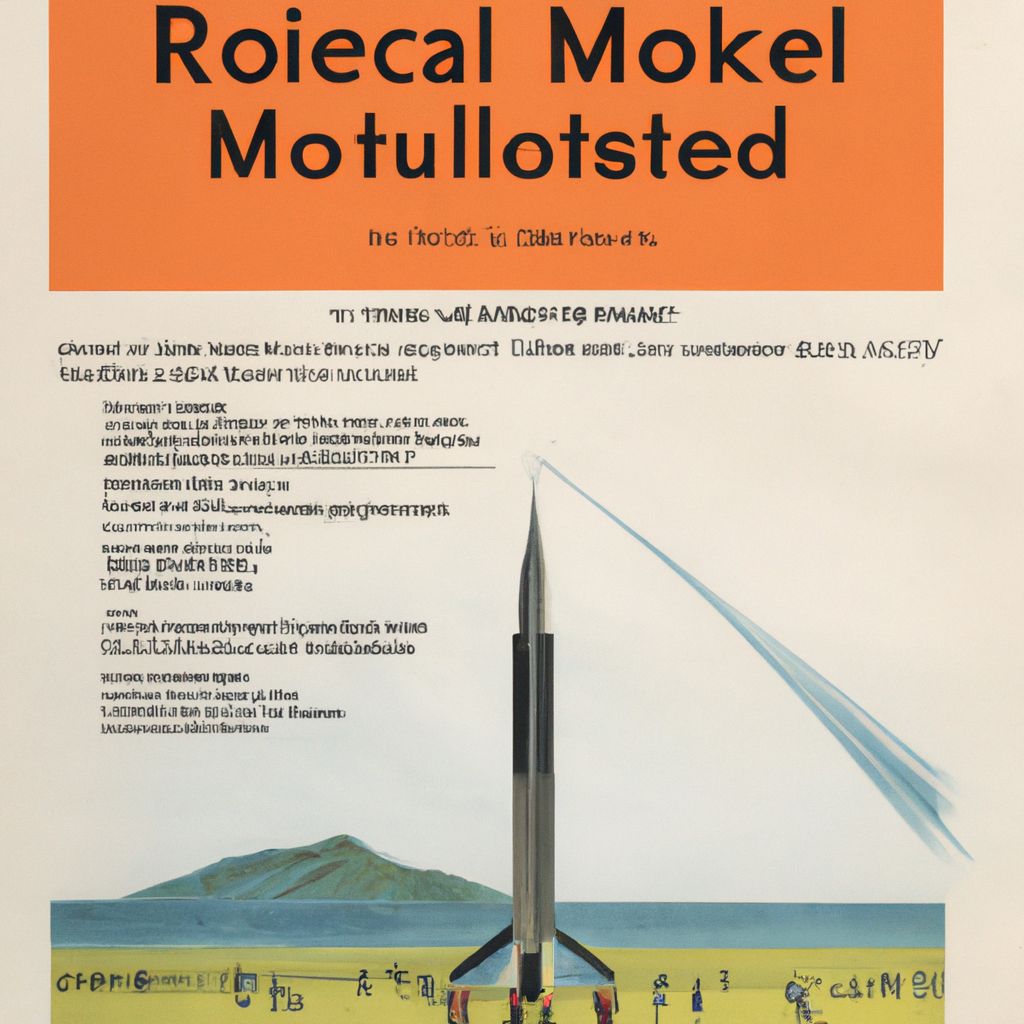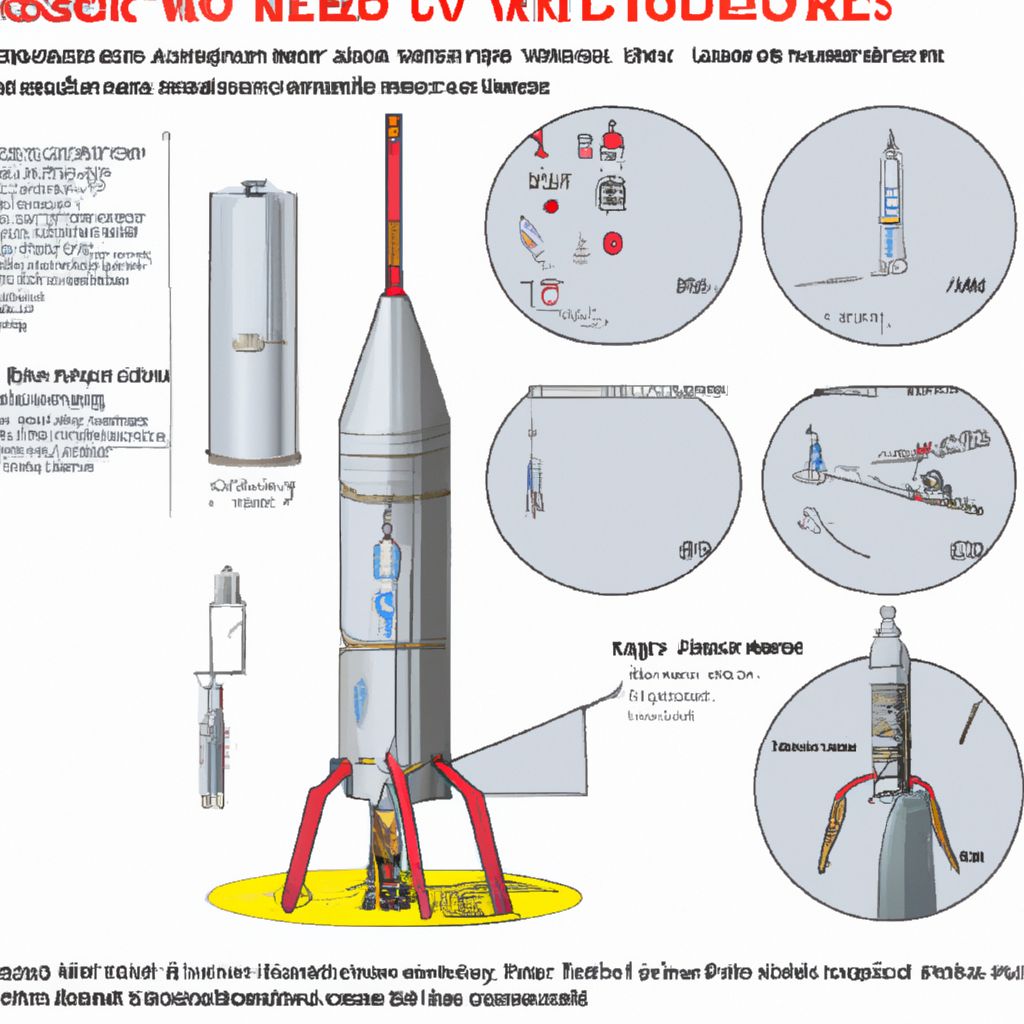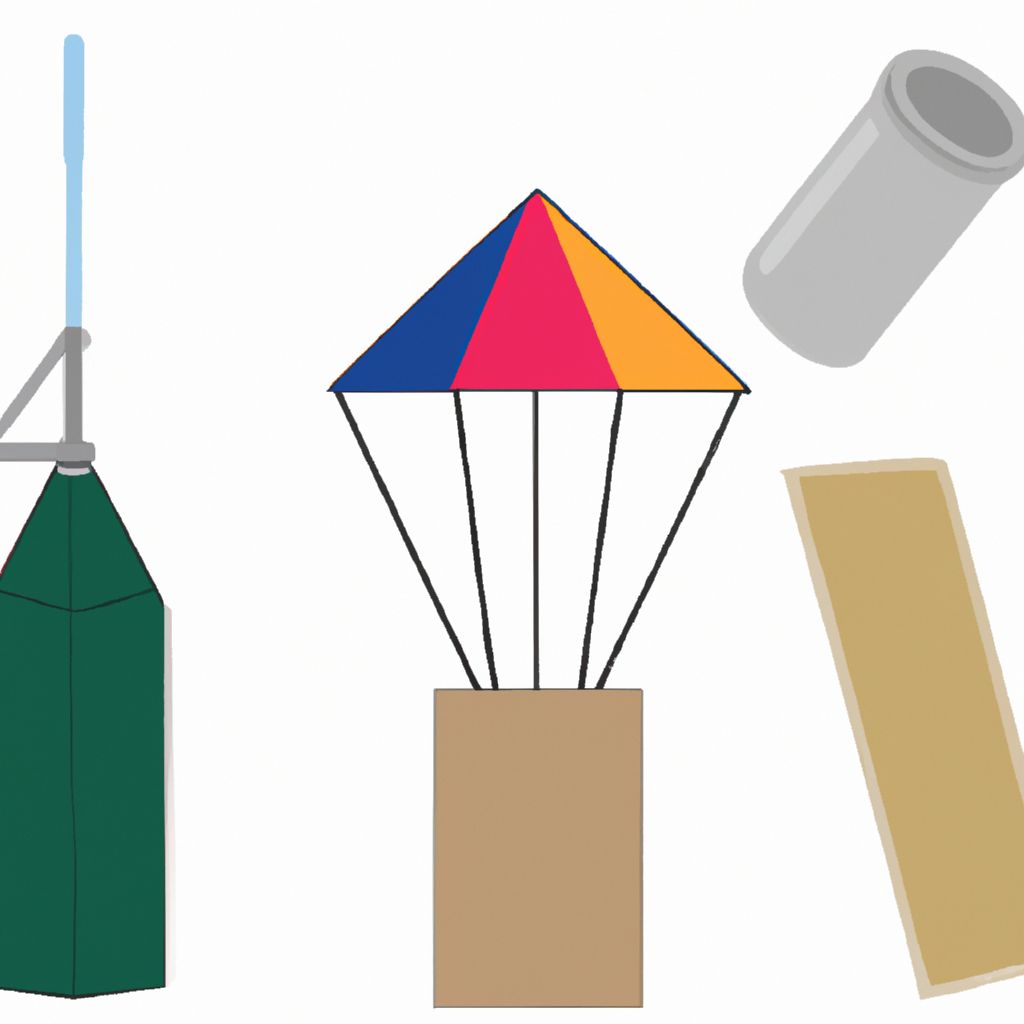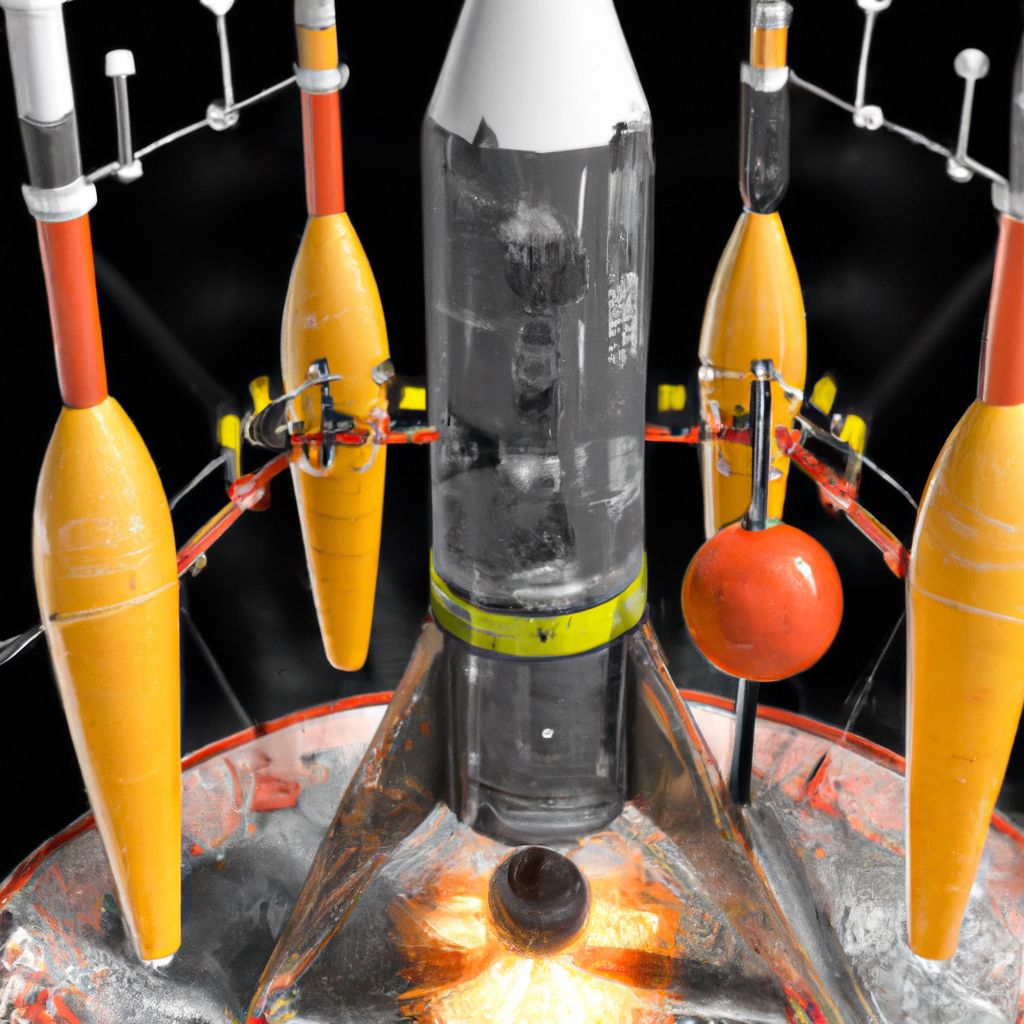- Introduction: An Overview of Model Rocketry
- History of Model Rocketry: From Beginnings to Present
- Understanding Basic Rocket Science: How Rockets Travel through Time and Space
- Essential Components of a Model Rocket: A Detailed Examination
- Safety and Legal Considerations in Model Rocketry
- Step-by-Step Guide to Building Your Own Model Rocket
- Choosing the Right Materials for Your Model Rocket
- Rocket Propulsion: Understanding How Your Rocket Will Take Flight
- Designing Your Rocket for Optimal Performance
- Testing Your Model Rocket: Pre-Flight Checks and Balancing
- Launching Your Model Rocket: Best Practices and Safety Procedures
- Troubleshooting Common Model Rocket Issues
- Advanced Model Rocketry: Experiments and Modifications
- Conclusion: The Rewards of Model Rocketry
Introduction: An Overview of Model Rocketry

Model rocketry is an engrossing hobby that combines elements of craftsmanship, scientific understanding, and sheer excitement. It's a pursuit that is enjoyed by enthusiasts of all ages and backgrounds, from schoolchildren learning about the principles of physics to adult hobbyists looking to challenge themselves with intricate designs and complex launches.
The roots of model rocketry can be traced back to the mid-20th century, when the excitement of the Space Age led to a surge in interest in all things aeronautical. Since then, the field has evolved to incorporate a wide range of technologies and techniques, making it a fascinating area to explore.
Building a model rocket involves a number of stages, each of which requires a different set of skills and knowledge. From understanding the principles of aerodynamics that will influence the rocket's design, to mastering the chemical reactions that will power its flight, each stage offers its own challenges and rewards.
In this blog post, we'll take a deep dive into the world of model rocketry, exploring the science behind these miniature marvels, the process of building a rocket from scratch, and the thrill of launching your very own spacecraft into the sky.
History of Model Rocketry: From Beginnings to Present

The history of model rocketry is as captivating as the hobby itself, tracing its roots back to the dawn of the Space Age. The earliest model rockets were built in the 1950s and 1960s, a period marked by the Space Race between the United States and the Soviet Union. During this time, model rockets were primarily made by enthusiasts and hobbyists, many of whom were inspired by the real-life space missions that were taking place.
The very first model rocket company, Model Missiles Inc., was founded by Orville Carlisle, a licensed pyrotechnics expert, and his brother Robert, a model airplane enthusiast. Their first model rocket kits and engines were launched to the market in 1958. Shortly after, a safety code for model rocketry was established, which is still in use today by the National Association of Rocketry (NAR) and the Tripoli Rocketry Association (TRA).
As years passed, the hobby grew more sophisticated. The 1970s and 1980s saw the advent of larger, more powerful rockets capable of reaching greater heights. The introduction of computer technology brought about digital launch systems and more precise tracking methods.
In the 21st century, model rocketry has become more accessible than ever. Advances in technology have made it possible to build rockets with intricate designs and impressive capabilities. The hobby continues to flourish, with thousands of launches taking place each year around the world, and competitions attracting enthusiasts from all walks of life.
Understanding Basic Rocket Science: How Rockets Travel through Time and Space

At the heart of model rocketry is a fundamental understanding of the principles of physics and chemistry that allow rockets to travel through time and space. This begins with Sir Isaac Newton's third law of motion: for every action, there is an equal and opposite reaction. In the context of rocketry, this means that when a rocket expels gas out of its engine, an equal force propels the rocket in the opposite direction.
The ability of a rocket to travel through space depends on its speed and direction, both of which are determined by the forces acting on it. These forces include gravity, which pulls the rocket towards the Earth; air resistance, which slows the rocket down; and the thrust of the rocket engine, which propels the rocket upwards. Balancing these forces to achieve a successful launch and flight is one of the key challenges of rocketry.
Chemistry also plays a crucial role in rocketry. The rocket's engine works by combining chemicals in a controlled reaction that produces a large volume of gas. This gas is expelled out of the engine at high speed, creating the thrust that propels the rocket into the air.
Understanding these scientific principles is fundamental to model rocketry. They influence every aspect of a rocket's design and operation, from the shape of the rocket to the choice of engine and fuel. By mastering these principles, you can build and launch rockets that are capable of reaching impressive heights and speeds.
Essential Components of a Model Rocket: A Detailed Examination

A model rocket, in its most basic form, consists of several key components, each with its own unique role in the rocket's operation. Understanding these components is essential to building a successful model rocket.
The rocket body, or airframe, is typically a lightweight tube made of plastic or cardboard. It houses all other components of the rocket and provides the basic structure. The shape and size of the body have a significant impact on the rocket's aerodynamics.
The rocket engine provides the thrust needed to launch the rocket into the air. Model rocket engines come in a variety of sizes and power levels, and they use solid propellants that ignite to create a controlled explosion, producing hot gases that are expelled out of the engine to create thrust.
The nose cone is the pointed front part of the rocket. It is designed to reduce air resistance, or drag, allowing the rocket to travel through the air more efficiently.
The fins at the base of the rocket provide stability during flight. They help to keep the rocket traveling in a straight line by counteracting any tendency to veer off course.
Most model rockets also include a recovery system, such as a parachute or streamer, that slows the rocket's descent after reaching its highest point, or apogee. This ensures that the rocket can be safely recovered and launched again.
Understanding each of these components, and how they work together, is essential to building a successful model rocket. With a good grasp of these basics, you can start to explore more advanced rocket designs and technologies.
Safety and Legal Considerations in Model Rocketry

Model rocketry is a fun and educational hobby, but it also involves some inherent risks due to the use of combustible materials and the potential for rockets to reach significant heights and speeds. Therefore, safety should always be a top priority for anyone involved in this hobby.
The National Association of Rocketry (NAR) and the Tripoli Rocketry Association (TRA) have established a Model Rocket Safety Code that provides guidelines for safe launching practices. This includes advice on choosing a suitable launch site, ensuring rockets are stable before launch, and standing a safe distance away during launch. Understanding and adhering to this code is essential.
Legal considerations also come into play. In many countries, including the United States, model rockets are classified as 'fireworks' and are subject to certain legal restrictions. These may include limits on the size and power of the rockets that can be launched, requirements for permits or licenses, and restrictions on where and when launches can take place.
It's also important to be mindful of other people and property when launching rockets. Always choose a launch site that is clear of buildings, trees, and power lines, and make sure there are no people or animals in the flight path of the rocket.
By taking these safety and legal considerations into account, you can ensure that your model rocketry hobby is not only enjoyable, but also safe and responsible.
Step-by-Step Guide to Building Your Own Model Rocket

Building your own model rocket can be an immensely satisfying experience. While the exact steps can vary depending on the design and complexity of the rocket, the following is a general step-by-step guide to get you started.
Step 1: Gather Your Materials and Tools
You'll need a model rocket kit, which typically includes the rocket body, nose cone, fins, engine mount, and recovery system. In addition, you'll need some basic tools like a hobby knife, sandpaper, and glue.
Step 2: Assemble the Engine Mount
The engine mount is the part of the rocket that holds the engine. This usually involves gluing together several pieces, including the engine tube and the engine mount rings.
Step 3: Attach the Fins
The fins are typically glued to the base of the rocket body. They need to be aligned properly to ensure stable flight, so take your time with this step.
Step 4: Install the Recovery System
This usually involves attaching a parachute or streamer to the inside of the rocket body. The recovery system is ejected out of the rocket at the peak of its flight to slow the rocket's descent.
Step 5: Attach the Nose Cone
The nose cone is usually the last piece to be attached. It's typically glued to the top of the rocket body.
Step 6: Paint and Decorate Your Rocket
Once the glue has dried, you can paint and decorate your rocket as you wish. Just make sure to use a lightweight paint to avoid affecting the rocket's flight performance.
Step 7: Install the Engine
Finally, you're ready to install the engine. This typically involves sliding the engine into the engine mount and securing it with an engine hook or clip.
Remember, patience and precision are key to building a successful model rocket. Take your time, follow the instructions carefully, and you'll be rewarded with a rocket that's ready for launch.
Choosing the Right Materials for Your Model Rocket

Choosing the right materials is a crucial step in building a model rocket. The materials you choose will have a significant impact on the rocket's performance, durability, and safety. Here are some considerations to keep in mind when selecting materials for your model rocket.
Rocket Body and Nose Cone
The rocket body (or airframe) and nose cone need to be lightweight, yet strong enough to withstand the forces of launch and recovery. Cardboard tubes, commonly used for their availability and ease of work, are a popular choice for the rocket body. For the nose cone, plastic is often used due to its lightweight and aerodynamic properties.
Fins
The fins provide stability during flight, so they need to be strong and rigid. Balsa wood is a commonly used material due to its lightweight and easy-to-cut nature. Plastic can also be used for its durability.
Engine Mount
The engine mount, which houses the rocket engine, needs to withstand high temperatures. Cardboard is often used, in combination with a metal engine hook to hold the engine in place.
Recovery System
The recovery system, which slows the rocket's descent after reaching its peak altitude, is typically made from lightweight materials that can withstand a certain amount of heat and force. Parachutes are often made from thin plastic or nylon, while streamers can be made from crepe paper or plastic film.
Glue
A strong, fast-drying glue is essential for assembling your rocket. Wood glue is often used for its strength and durability, while super glue can be used for quick fixes.
Remember, the goal is to balance weight and strength. Lighter materials will allow your rocket to fly higher, but they also need to be strong enough to withstand the forces of launch and recovery.
Rocket Propulsion: Understanding How Your Rocket Will Take Flight

Rocket propulsion is the force that propels a rocket into the air, and understanding this principle is crucial to the success of your model rocket launch. Rocket propulsion is based on Newton's third law of motion: for every action, there is an equal and opposite reaction. When the rocket engine burns its fuel, it creates a force (the action) that propels hot gases downwards out of the engine. The equal and opposite reaction to this force propels the rocket upwards.
The fuel used in model rocket engines is a type of solid propellant that burns at a controlled rate. When ignited, the propellant undergoes a chemical reaction that rapidly produces a large volume of hot gas. This gas expands and is forced out of the engine through a nozzle, creating the thrust that propels the rocket into the air.
The amount of thrust produced by a rocket engine is measured in Newtons and is indicated by a letter on the engine. The higher the letter, the more thrust the engine produces. Model rocket engines range from A (the smallest) to O (the largest).
It's also important to note that the thrust produced by a rocket engine is not constant. It typically starts at a high level (the 'thrust phase') to get the rocket off the ground, then drops off to a lower level (the 'sustainer phase') to keep the rocket climbing at a steady rate. The engine then stops burning, and the recovery system is activated to slow the rocket's descent.
Understanding rocket propulsion is not just about getting your rocket off the ground—it's also about controlling its flight to ensure a safe and successful launch and recovery.
Designing Your Rocket for Optimal Performance

Designing a model rocket for optimal performance involves careful consideration of several factors, including the rocket's shape, size, weight, and balance. All of these factors can have a significant impact on how high and how straight your rocket will fly. Here are some key design principles to consider.
Aerodynamics
The shape of your rocket will greatly affect its aerodynamics, or how it moves through the air. A streamlined shape with a pointed nose and slim body will minimize air resistance and allow the rocket to reach higher altitudes. The placement and shape of the fins also play a crucial role in maintaining stability during flight.
Weight
The weight of your rocket will affect both how high it can fly and how stable it will be during flight. Lighter rockets can fly higher, but they also tend to be less stable than heavier rockets. Using lightweight materials and minimizing unnecessary weight can help to optimize your rocket's performance.
Center of Gravity
The center of gravity (CG) is the point at which the rocket balances, and it plays a crucial role in the rocket's stability. The CG should be located towards the front of the rocket, and it should always be ahead of the center of pressure (CP), which is the point at which the aerodynamic forces on the rocket are balanced.
Engine Power
The power of the rocket engine will determine how much thrust is generated during launch. More powerful engines will allow your rocket to reach higher altitudes, but they also require a stronger and heavier rocket structure.
Recovery System
The design of the recovery system will affect how your rocket descends after reaching its peak altitude. Parachutes are commonly used for their ability to slow the rocket's descent and allow for safe recovery, but they also require more space inside the rocket body.
By considering these factors in your rocket design, you can optimize its performance and ensure a successful and enjoyable launch.
Testing Your Model Rocket: Pre-Flight Checks and Balancing

Before launching your model rocket, it's crucial to conduct a series of pre-flight checks and balancing tests. These steps ensure that your rocket is safe to launch and will perform as expected.
Structural Integrity
Inspect your rocket carefully for any signs of damage or weak points. Make sure all components are securely attached and there are no loose parts. Pay special attention to the fins and the nose cone, as these are critical for flight stability.
Engine Installation
Ensure that the engine is properly installed and securely fastened. The engine should fit snugly in the engine mount and should not move or slide out.
Recovery System
Check that the recovery system is correctly folded and packed. Make sure the parachute or streamer is not tangled and will deploy as planned when the ejection charge activates.
Stability
One of the most critical tests you can perform is a swing test to check the stability of the rocket. Attach a string to the center of gravity of the rocket (usually around the middle of the rocket body) and swing the rocket in a circular path. If the rocket tends to fly nose-first, it is stable. If it wobbles or flies tail-first, it is unstable and you will need to adjust the design.
Balance
Finally, check the balance of the rocket by resting it horizontally on a finger or a thin rod. The rocket should balance near the middle. If it's too front-heavy or tail-heavy, you may need to adjust the weight distribution.
By conducting these pre-flight checks and balancing tests, you can ensure that your rocket is safe to launch and will fly as expected. Remember, safety should always be your first priority in model rocketry.
Launching Your Model Rocket: Best Practices and Safety Procedures

Launching a model rocket is the thrilling culmination of all your hard work and preparation. However, it's important to follow best practices and safety procedures to ensure a successful and safe launch. Below are some key steps to remember.
Choosing a Launch Site
Select a wide, open space away from buildings, trees, power lines, and people. The National Association of Rocketry (NAR) suggests a minimum launch site dimension of one-half the expected altitude, with no altitude being over 1500 feet unless special permission is granted.
Prepare for Launch
Install the engine into your rocket and insert the igniter. Place your rocket on the launch pad, making sure it is aimed straight up and not at an angle. Connect the launch controller and ensure everyone is standing a safe distance away.
Final Check
Before you launch, do a final safety check. Make sure the launch area is clear and that the rocket is aimed away from people, buildings, and vehicles. Check that the rocket is stable on the launch pad and that the launch controller is working properly.
Countdown and Launch
When everything is ready and the launch area is clear, begin your countdown. Press the launch button at the end of the countdown to ignite the engine and launch your rocket.
Post-Launch
Keep your eye on the rocket as it ascends, and be ready to track its descent once the recovery system deploys. Once the rocket has landed, make sure it's safe to approach (the engine can remain hot for several minutes after landing).
Remember, safety is paramount in model rocketry. Always follow the NAR's Model Rocket Safety Code, and never rush a launch. With careful preparation and adherence to safety procedures, you can enjoy the thrill of launching your own model rocket.
Troubleshooting Common Model Rocket Issues

While model rocketry is a thrilling hobby, it can sometimes come with its own set of challenges. Here are some common issues you may encounter and troubleshooting tips to help you resolve them.
Issue: Rocket Doesn't Launch
This could be due to a faulty igniter or a problem with the launch controller. Check the connections and try replacing the igniter. Make sure the launch controller has fresh batteries.
Issue: Rocket Veers Off Course
This is usually a stability issue. Check the alignment of the fins and the balance of the rocket. The rocket's center of gravity should be ahead of the center of pressure.
Issue: Parachute Doesn't Deploy
This could be due to the parachute being packed too tightly or the ejection charge failing to ignite. Try loosely folding the parachute instead of tightly winding it. Make sure the ejection charge is properly installed and not damaged.
Issue: Rocket Descends Too Quickly
This could be due to the parachute being too small or the rocket being too heavy. Try using a larger parachute or reducing the weight of the rocket.
Issue: Rocket Doesn't Reach Expected Altitude
This could be due to the rocket being too heavy or the engine being underpowered. Try reducing the weight of the rocket or using a more powerful engine.
Remember, troubleshooting is a normal part of the model rocketry process. It's a great opportunity to learn more about how rockets work and how to improve your designs. Don't get discouraged if things don't go perfectly the first time - keep experimenting and learning, and you'll continue to improve your rocketry skills.
Advanced Model Rocketry: Experiments and Modifications

Once you've mastered the basics of model rocketry, there's a whole world of advanced techniques, experiments, and modifications to explore. These can not only add to the excitement and challenge of the hobby, but also deepen your understanding of rocket science. Here are a few ideas to get you started.
Multi-Stage Rockets
Multi-stage rockets use two or more engines ignited in succession, with each stage propelling the rocket to higher altitudes. Building a successful multi-stage rocket requires careful design and precise timing.
Cluster Engines
Cluster engines involve igniting two or more engines at the same time, providing additional thrust for larger and heavier rockets. This requires a reliable ignition system and careful alignment of the engines.
On-Board Cameras
Modern technology has made it possible to attach small, lightweight cameras to model rockets, providing spectacular footage of the launch and flight. This requires careful balancing to ensure the camera doesn't affect the rocket's stability.
Altitude Tracking
There are various methods to track the altitude reached by your rocket, from simple visual estimates to sophisticated electronic altimeters. This can add a scientific dimension to your launches, allowing you to experiment with different designs and launch conditions.
Custom Designs
Designing and building your own custom rocket from scratch is the ultimate challenge in model rocketry. This allows you to experiment with different shapes, materials, and technologies, pushing the boundaries of what's possible.
Remember, safety should always be your top priority, especially when experimenting with advanced techniques. Always follow the Model Rocket Safety Code, and don't hesitate to seek advice from more experienced rocketeers. Happy launching!
Conclusion: The Rewards of Model Rocketry

Model rocketry is a hobby that truly has something for everyone. Whether you're a budding scientist interested in the principles of aerodynamics and physics, a craft enthusiast keen on building and painting your own creations, or simply someone looking for the thrill of launching a rocket into the sky, model rocketry offers endless opportunities for learning and fun.
But beyond the thrill of launch, model rocketry also offers deeper rewards. It challenges you to think critically, solve problems, and understand complex scientific principles. It encourages patience, precision, and attention to detail. And perhaps most importantly, it inspires curiosity and wonder about the universe we live in.
Whether you're launching your first simple rocket or mastering advanced techniques, model rocketry is a journey of discovery that never ends. So why not start your own journey today, and see where model rocketry can take you?


